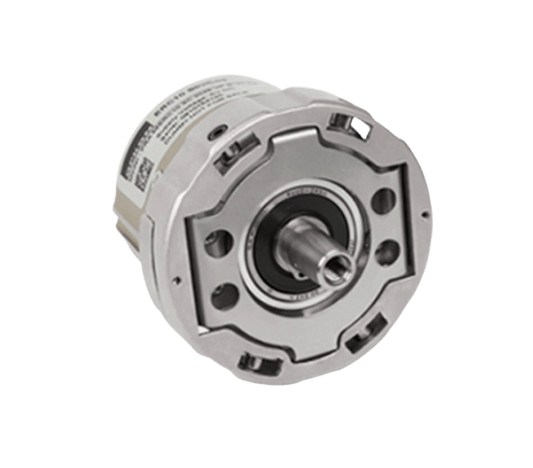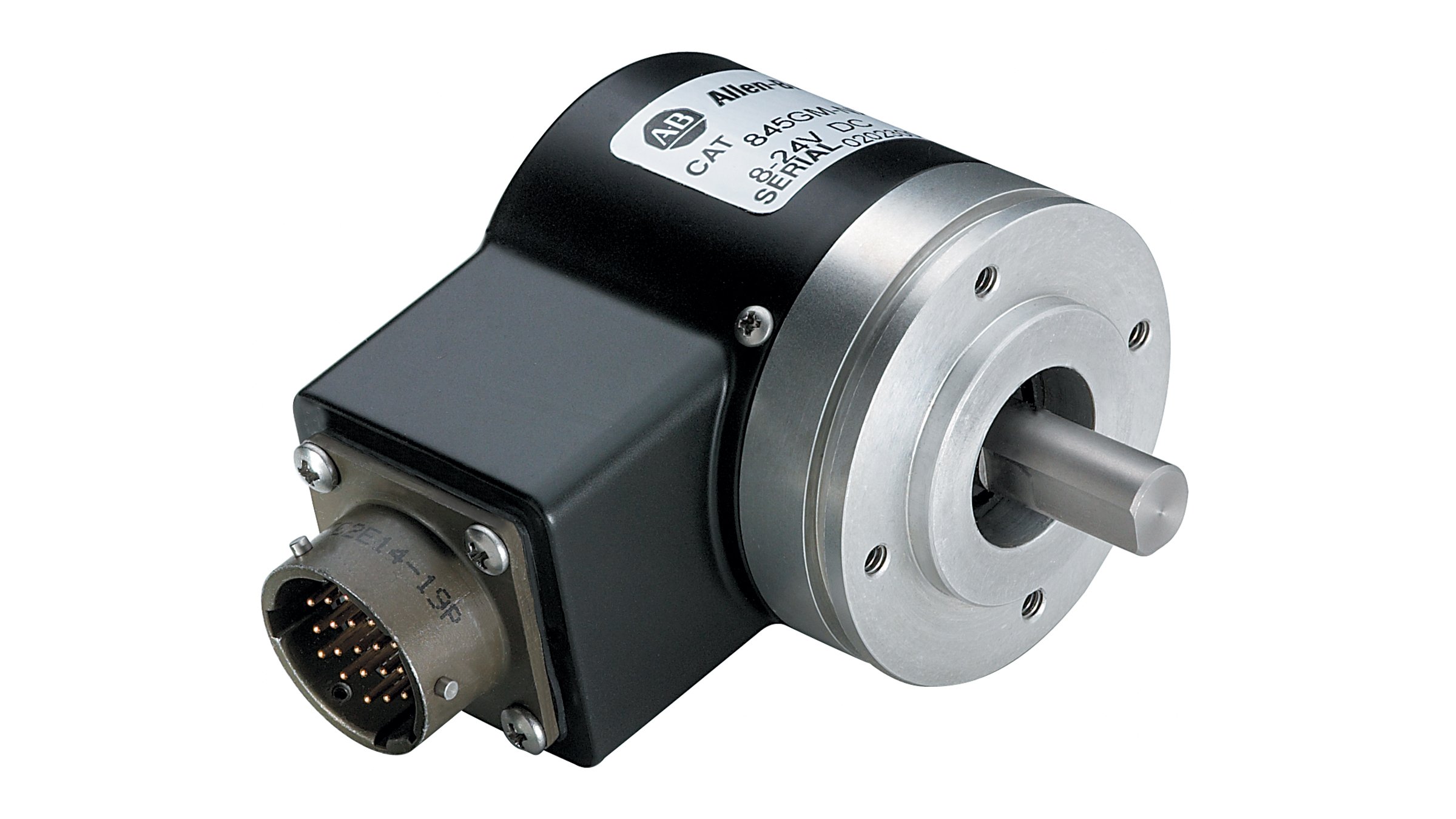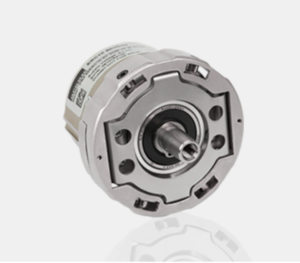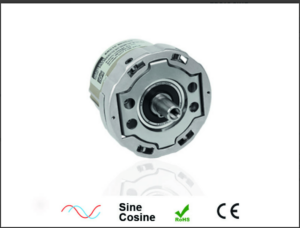Understanding Encoders Encoders are essential components in modern automation and motion control systems, enabling precise feedback for position, velocity, and direction. They serve as the…
Understanding Encoders
Encoders are essential components in modern automation and motion control systems, enabling precise feedback for position, velocity, and direction. They serve as the link between mechanical movement and electronic processing, allowing systems to make real-time decisions with pinpoint accuracy. These devices have become indispensable in the advancement of automation technology, supporting a wide range of industrial and robotic applications.
Definition and Function of Encoders
An encoder is an electromechanical device that converts linear or rotary motion into an electrical signal, which is interpreted by a control system such as a PLC or motion controller. This signal provides critical data for:
- Position tracking
- Speed monitoring
- Direction sensing
- Motion synchronization
Encoders are used in various industries, including manufacturing, robotics, packaging, material handling, and renewable energy—ensuring responsive control in both simple and complex systems. Devices may feature a solid shaft encoder or hollow shaft encoder, depending on mounting configuration and torque transmission requirements. Their flexibility makes them suitable for a broad range of applications within industrial automation.
Differences Between Absolute and Incremental Encoders
There are two main types of encoders used in industrial automation: absolute encoders and incremental encoders. Each provides position feedback but differs in how that information is generated and retained.
Absolute Encoders
- Assign a unique binary or digital code to each encoder shaft position
- Retain position data even after power loss
- Available in single-turn (for short-range angular positioning) and multi-turn (for long-range or rotational tracking) models
- Ideal for complex systems where repeatability and memory retention are critical
- Often support protocols like SSI, CANopen, EtherCAT, and more
- Compatible with both analogue signal and digital signals depending on system requirements
Incremental Encoders
- Output pulses as the shaft rotates, counting them to determine position
- Require a homing sequence after power loss
- Simpler and often more cost-effective for basic applications like speed monitoring
- Commonly used with quadrature (A/B/Z) signals and pulse counters
- Represent the incremental type of encoder technology, where position is tracked relative to a starting point
In summary, absolute encoders offer superior feedback reliability and are preferred in environments where system reset, loss of power, or multi-axis coordination demands continuous position memory and high-resolution output.
Types of Absolute Encoders
Absolute encoders are classified by how much positional data they can capture and retain in a single rotation. The two main types—single-turn and multi-turn—are each designed for specific use cases depending on rotational range, memory requirements, and system complexity.
Single-turn Absolute Encoders
A single-turn absolute encoder measures the shaft’s position within one complete revolution (360°). It provides a unique digital output for each angular position but does not track how many full turns the shaft has completed.
Key characteristics:
- Ideal for short-stroke or limited-range rotary applications
- Typically used in servo motors, actuators, and compact control devices
- High resolution available (up to 16–18 bits in many models)
- Fast and precise position feedback with minimal power consumption
- Often chosen for systems that don’t require full rotation tracking
These encoders are well suited for:
- Valve positioning
- Robotic joint feedback
- Printing and labeling machines
- Semiconductor manufacturing systems
Some single-turn encoders use optical encoders as their sensing method, providing high-resolution signal output by detecting light interruptions through a precision-etched disc.
Multiturn Absolute Encoders
A multi-turn absolute encoder tracks not only the angular position within a single rotation but also how many full rotations have occurred—often up to thousands of turns. This allows for comprehensive position tracking in applications with large or continuous movement ranges.
Core advantages:
- Integrated gear or electronic counters for turn counting
- Maintains absolute position over long linear or rotary movements
- Available with battery-free, gearless magnetic designs for high reliability
- Supports up to 30+ bits of total resolution (combined single + multi-turn data)
Multi-turn encoders are ideal for:
- Elevators and gantry cranes
- Wind turbine blade pitch and yaw control
- Industrial robot arms with multi-axis articulation
- Packaging and bottling lines requiring repeatable, long-range motion feedback
These devices are particularly valuable in industrial applications where position accuracy and system recovery are mission-critical. In complex automation technology systems where movement spans multiple rotations, multi-turn encoders eliminate the need for external tracking devices or recalibration after power interruptions..
Importance of Absolute Encoders in Industrial Automation
In the evolving world of smart factories and high-speed production lines, absolute encoders are essential for maintaining accuracy, continuity, and control. Their ability to retain precise position data even after power loss makes them a cornerstone of modern automation.
Precision in Position Measurement
Absolute encoders provide true position feedback by assigning a unique digital value to every possible shaft position. This eliminates ambiguity, ensures repeatable accuracy, and removes the need for re-homing sequences.
Key benefits of precision feedback include:
- Consistent accuracy in servo-driven systems
- Smoother motion profiles in robotics and CNC machining
- Reliable zero-point referencing without additional sensors
- High-resolution tracking in both single-turn and multi-turn formats
Whether in compact machines or multi-axis systems, absolute encoders support flawless execution of motion paths and position-critical tasks.
Role in Complex Systems
In sophisticated automation networks, position data is used not just for movement but for synchronized control, error correction, and safety systems. Absolute encoders play a vital role in:
- Coordinated robotic arms and articulated motion control
- Multi-stage conveyors with automated divergence and sorting
- Wind turbines, solar trackers, and crane systems where position memory is essential
- Mobile platforms such as AGVs that must retain position after system reboot
These applications require an encoder that can handle real-time feedback, interface with advanced fieldbus protocols (like EtherCAT or CANopen), and provide robust performance in harsh environments.
Advantages Over Incremental Encoders
While incremental encoders are suitable for basic applications, absolute encoders offer several clear advantages in industrial automation:
- Power-loss immunity: No need to re-home after shutdown
- Higher system reliability: Less dependency on external position tracking
- Flexible output options: Digital, analog, and serial protocols
- Multi-turn tracking: Keeps count of full rotations, not just angles
- Programmable settings: Many absolute encoders allow in-field configuration for resolution and direction
In short, absolute encoders enable smarter, more autonomous machines with the precision and reliability demanded by today’s industrial environments.
Types of Absolute Encoders
Absolute encoders are classified by how much positional data they can capture and retain in a single rotation. The two main types—single-turn and multi-turn—are each designed for specific use cases depending on rotational range, memory requirements, and system complexity.
Single-turn Absolute Encoders
A single-turn absolute encoder measures the shaft’s position within one complete revolution (360°). It provides a unique digital output for each angular position but does not track how many full turns the shaft has completed.
Key characteristics:
- Ideal for short-stroke or limited-range rotary applications
- Typically used in servo motors, actuators, and compact control devices
- High resolution available (up to 16–18 bits in many models)
- Fast and precise position feedback with minimal power consumption
- Often chosen for systems that don’t require full rotation tracking
These encoders are well suited for:
- Valve positioning
- Robotic joint feedback
- Printing and labeling machines
- Semiconductor manufacturing systems
Multiturn Absolute Encoders
A multi-turn absolute encoder tracks not only the angular position within a single rotation but also how many full rotations have occurred—often up to thousands of turns. This allows for comprehensive position tracking in applications with large or continuous movement ranges.
Core advantages:
- Integrated gear or electronic counters for turn counting
- Maintains absolute position over long linear or rotary movements
- Available with battery-free, gearless magnetic designs for high reliability
- Supports up to 30+ bits of total resolution (combined single + multi-turn data)
Multi-turn encoders are ideal for:
- Elevators and gantry cranes
- Wind turbine blade pitch and yaw control
- Industrial robot arms with multi-axis articulation
- Packaging and bottling lines requiring repeatable, long-range motion feedback
In complex automation systems where movement spans multiple rotations, multi-turn encoders eliminate the need for external tracking devices or recalibration after power interruptions.
Communication Protocols
To function effectively in industrial automation systems, absolute encoders must transmit position data reliably and quickly to controllers such as PLCs, HMIs, and motion drives. The method by which this data is transmitted—via communication protocols—greatly influences speed, accuracy, noise immunity, and system compatibility.
Synchronous Serial Interface (SSI)
SSI (Synchronous Serial Interface) is one of the most widely used digital communication protocols for absolute encoders, offering excellent resolution and robust data integrity.
Key features of SSI:
- Provides point-to-point communication between encoder and controller
- Transmits position data synchronously with a clock signal
- Immune to noise and suitable for long cable runs
- Commonly used with magnetic and optical absolute encoders
- Typically supports resolutions of up to 25 bits or more
SSI is especially suited for:
- Motion axes in CNC machines and servo drives
- Position-critical robotic joints
- Applications requiring simple, fast, and accurate feedback without complex bus topologies
Other Communication Protocols
Modern absolute encoders are also available with a wide range of alternative communication protocols, allowing integration into complex industrial networks and distributed control architectures.
Popular alternatives include:
- CANopen: Fieldbus-based protocol used in decentralized systems such as AGVs, robotics, and machine tools
- PROFINET: Real-time Ethernet-based communication ideal for high-speed factory automation
- EtherCAT: High-performance Ethernet protocol offering synchronized control for motion systems
- Modbus RTU: Simple and cost-effective serial communication used in legacy systems and remote I/O setups
- IO-Link: A point-to-point smart sensor protocol that allows two-way communication and parameter diagnostics
- Analog (0–10V / 4–20mA): Used in simpler applications requiring linear position feedback without digital processing
- RS485 and RS422: Differential serial communications often used with SSI-compatible encoders
Choosing the right protocol depends on system requirements such as update rate, network size, compatibility with controllers, and environmental conditions. Many advanced encoders support programmable settings, allowing integrators to tailor resolution, output format, and communication speed to match project-specific demands.
Integration with PLC Systems
Absolute encoders are widely used in conjunction with PLC systems (Programmable Logic Controllers) to provide accurate and consistent position feedback across automated operations. Their compatibility with modern control hardware enables seamless monitoring and control of motion-based processes—from robotic arms to conveyor systems.
Compatibility and Integration Process
Most industrial absolute encoders are designed to integrate directly with leading PLC brands like Mitsubishi.
Integration highlights:
- Encoders with digital outputs (e.g., SSI, CANopen, EtherCAT) can be connected directly to PLC encoder or high-speed counter modules
- Plug-and-play setup is often possible using predefined encoder configuration blocks in the PLC software
- Encoders with analog outputs (0–10 V, 4–20 mA) are compatible with analog input modules for simpler setups
- Fieldbus options like PROFINET and Modbus ensure scalability in large distributed systems
- Programmable absolute encoders allow resolution, direction, and bit length to be adjusted to match the PLC‘s expectations
Proper grounding, shielding, and use of flexible cables ensure signal integrity and long-term reliability in industrial environments.
Enhancements in System Efficiency and Accuracy
When paired with a PLC, absolute encoders provide real-time data that enhances both machine performance and system responsiveness.
Operational benefits include:
- Elimination of homing routines, reducing machine startup time
- Immediate recovery of position after power failure or emergency stops
- Precision synchronization of multi-axis systems, improving production accuracy
- Reduced programming complexity by using absolute position values directly in PLC logic
- Enhanced diagnostics and predictive maintenance via smart encoders with IO-Link or CANopen
This direct integration results in more intelligent automation, lower downtime, and smoother motion across your entire control architecture.
Add instruction
Key Features and Specifications
Absolute encoders are engineered for precision, durability, and adaptability, ensuring dependable performance even in the most demanding automation environments. From rugged construction to customizable electrical outputs, their features reflect the needs of today’s high-performance industrial systems.
IP Ratings
One of the most critical specifications for any encoder is its IP (Ingress Protection) rating, which determines resistance to dust, water, and contaminants.
Common IP ratings in absolute encoders:
- IP65 – Protection against dust and low-pressure water jets
- IP67 – Fully dust-tight and immersion-proof up to 1 meter
- IP68/IP69K – Extended protection for washdown, submersion, and high-pressure cleaning environments
Higher IP ratings are essential for encoders installed in harsh environments, such as outdoor equipment, food processing plants, or mobile machinery exposed to dirt, oil, and moisture.
Environmental Adaptability
Industrial automation systems often operate in extreme conditions—high heat, cold, vibration, and chemical exposure. Absolute encoders are designed with materials and construction techniques to thrive under these variables.
Key environmental features include:
- Wide operating temperature ranges (e.g., -40°C to +85°C)
- Magnetic sensing technology for vibration and shock resistance
- UV-resistant and corrosion-resistant housings for outdoor and marine use
- Flexible cable options for dynamic drag chain applications
- Encoders with mechanical strength ratings to withstand impacts and long operational cycles
Whether installed in a cleanroom or on a wind turbine, these encoders ensure reliable performance in virtually any setting.
Tailored Solutions for Specific Industrial Needs
Absolute encoders are available in a wide range of configurations to support industry-specific challenges and application requirements.
Tailored features include:
- Single-turn or multi-turn output for position tracking over different movement scales
- Interface options like SSI, CANopen, EtherCAT, PROFIBUS, analog, and Modbus RTU
- Programmable encoders for adjustable resolution, counting direction, and zero-point offsets
- Compact designs for space-limited installations and retrofitting
- Specialized shaft configurations: solid shaft, hollow shaft, blind hollow, or through-hole
- Miniature encoder variants for integration into tight control cabinets or embedded systems
Manufacturers often offer custom encoder solutions, including specialized connectors, extended cable lengths, and application-specific certifications for industries like packaging, mining, defense, or offshore energy.
Applications of Absolute Encoders
Absolute encoders are used wherever precise, non-resettable position tracking is critical. Their ability to deliver accurate feedback—even after a power failure—makes them ideal for automation across diverse industries, from packaging to heavy-duty mining.
Packaging Industry
In the packaging industry, high-speed, high-precision control is essential for labeling, filling, wrapping, and sealing systems. Absolute encoders enable:
- Accurate registration of labels and print marks
- Synchronized motion between conveyor belts and robotic pick-and-place systems
- Position feedback for rotary tables and turret-driven packaging lines
- Elimination of re-homing delays during product changeovers
- Smooth integration with PLCs and servo drives for rapid line adjustments
Their compact design, IP-rated housings, and support for fieldbus protocols like EtherCAT and CANopen make them ideal for packaging machinery where uptime and throughput are critical.
Mining Industry
In mining and heavy industrial environments, absolute encoders provide rugged, maintenance-free feedback in conditions that are hostile to most electronics.
Applications include:
- Bucket and boom positioning in large earthmoving equipment
- Winch and hoist position control for underground operations
- Monitoring of conveyor belt positions and tension systems
- Accurate tracking of rotation and extension on mobile drilling rigs
- Motion feedback in automated ore-sorting and material handling systems
Absolute encoders in mining must withstand harsh environments, including dust, vibration, moisture, and extreme temperatures. IP67+ ratings, magnetic sensing, and heavy-duty housings are standard for this sector.
Manufacturing Industry
The manufacturing industry depends on absolute encoders for a wide array of motion control tasks in automated production lines and robotic systems.
Use cases include:
- CNC machine tool positioning and tool head control
- Automated guided vehicles (AGVs) requiring position retention during movement
- Assembly lines requiring coordinated robotic arm movement
- Injection molding and stamping press position feedback
- Conveyor indexing and motion synchronization
Absolute encoders enhance system efficiency, accuracy, and recovery time during power interruptions—allowing high-volume, continuous manufacturing processes to run with minimal manual intervention.
Broader integration with Safety & Automation Systems
In modern industrial environments, High Precision Absolute Encoders are only one part of an integrated safety architecture. These systems will work in tandem with various critical components such as safety PLCs, safety contactors or safety light curtains (including muting light curtains) to ensure real-time hazard detection and safe machine shutdown. Common peripheral safety devices like the emergency stop button, two hand station, and emergency stop rope pull are all effectively managed by the safety PLC’s logic structure.
Advanced installations frequently incorporate safety relays, safety non-contact switches, RFID switches, mechanical interlock switches, and solenoid locking switches—each adding specific protective functions to the machinery. To maintain continuous system health, engineers also deploy standstill monitors, speed monitors, soft starters, and reversing contactors within their automation frameworks. For measuring the product itself, solutions such as measurement light curtains can be integrated.
Beyond motion and logic safety, electrical condition monitoring is equally essential. Devices like insulation monitors, battery monitors, current monitors, voltage monitoring relays, phase sequence relays, undervoltage relays, and undercurrent monitoring relays are often integrated to detect anomalies in power flow or equipment performance, with this data displayable on HMI Touch Panels or similar systems. To support reliable operation, high-quality power relays and regulated power supplies are essential.




